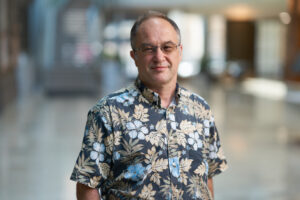Morhardt, assistant professor in the Department of Neuroscience, brings a passion for comparative neuroanatomy and public outreach to teaching medical students.
Ashley Morhardt elected to the Academy of Educators


Morhardt, assistant professor in the Department of Neuroscience, brings a passion for comparative neuroanatomy and public outreach to teaching medical students.

The cognitive neuroscientist at Macquarie University got his first wet lab experience as a postdoc at WashU, and now addresses those same questions about hand-eye coordination and sensory-motor integration in his research on surgeons’ skills.

Nettles has led outreach efforts to bring neuroscience into St. Louis classrooms, all while making inroads into the biology of Rett Syndrome for her graduate research in Harrison Gabel’s lab.

The $7 million grant awarded to a team of collaborators is part of the NIH’s new Impact of Genomic Variation on Function Consortium.

Wang’s research as a postdoc in Andreas Burkhalter’s lab revealed the mouse visual cortex as much more structurally complex than scientists previously thought.

The project aims to refine recombination-mediated cassette exchange (RMCE), an approach to inserting large DNA sequences into the genome, for use in the model organism C. elegans.

Richards, the head of the Department of Neuroscience, will apply the high-risk, high-reward grant to developing a new animal model for studying brain development.

Along with co-PI Hong Chen, associate professor of biomedical engineering, and collaborators including neuroscience professor Larry Snyder, Monosov will adapt an approach to controlling brain activity, called optogenetics, with the ultimate goal of repairing neural dysfunction.

Richards and other representatives from the International Brain Initiative will discuss methods of advancing international neuroscience collaborations at this event from the Panel for the Future of Science and Technology (STOA).

The BRAIN Initiative funding will improve the ability of light field microscopy to record the activity of all neurons across the entire larval zebrafish brain as the animal swims freely.